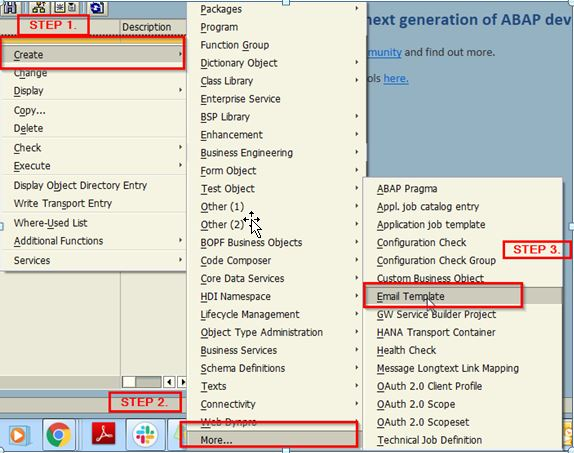C 语言中如何实现自定义数据类型的输入输出
在 C 语言中,除了基本的数据类型(如整型、浮点型、字符型等),我们还经常需要自定义数据类型来满足特定的编程需求。自定义数据类型可以更好地组织和管理数据,提高代码的可读性和可维护性。然而,要实现自定义数据类型的输入输出,需要一些特定的方法和技巧。
一、结构体数据类型的输入输出
结构体是 C 语言中最常用的自定义数据类型之一。它允许将不同类型的数据组合在一起,形成一个新的复合数据类型。
#include <stdio.h>
// 定义一个学生结构体
struct Student {
char name[50];
int age;
float score;
};
int main() {
struct Student stu;
// 输入学生信息
printf("请输入学生姓名:");
scanf("%s", stu.name);
printf("请输入学生年龄:");
scanf("%d", &stu.age);
printf("请输入学生成绩:");
scanf("%f", &stu.score);
// 输出学生信息
printf("学生姓名:%s\n", stu.name);
printf("学生年龄:%d\n", stu.age);
printf("学生成绩:%.2f\n", stu.score);
return 0;
}
在上述示例中,我们定义了一个名为Student的结构体,包含了学生的姓名(字符串)、年龄(整数)和成绩(浮点数)。在main函数中,我们通过scanf函数分别输入结构体成员的值,通过printf函数输出结构体成员的值。
需要注意的是,对于字符串类型的成员name,在使用scanf输入时不需要使用取地址符&,而对于整数和浮点数类型的成员age和score,则需要使用取地址符&。
二、枚举数据类型的输入输出
枚举是一种用户定义的数据类型,它由一组命名的常量值组成。
#include <stdio.h>
// 定义一个星期枚举类型
enum Weekday {
MONDAY,
TUESDAY,
WEDNESDAY,
THURSDAY,
FRIDAY,
SATURDAY,
SUNDAY
};
int main() {
enum Weekday day;
// 输入星期
printf("请输入星期(0 - 6): ");
int num;
scanf("%d", &num);
// 检查输入是否有效
if (num >= 0 && num <= 6) {
day = (enum Weekday)num;
} else {
printf("输入无效,请重新输入\n");
return 1;
}
// 输出星期
switch (day) {
case MONDAY:
printf("星期一\n");
break;
case TUESDAY:
printf("星期二\n");
break;
case WEDNESDAY:
printf("星期三\n");
break;
case THURSDAY:
printf("星期四\n");
break;
case FRIDAY:
printf("星期五\n");
break;
case SATURDAY:
printf("星期六\n");
break;
case SUNDAY:
printf("星期日\n");
break;
}
return 0;
}
在这个示例中,我们定义了一个enum Weekday枚举类型,包含了一周的七天。在输入时,用户需要输入一个整数,然后将其转换为对应的枚举值。在输出时,使用switch语句根据枚举值输出对应的星期名称。
三、联合数据类型的输入输出
联合(Union)是一种特殊的数据类型,它允许在相同的内存位置存储不同的数据类型。
#include <stdio.h>
// 定义一个联合类型
union Data {
int intValue;
float floatValue;
char charValue;
};
int main() {
union Data data;
// 输入数据类型和值
printf("请选择输入的数据类型(1 - int,2 - float,3 - char): ");
int choice;
scanf("%d", &choice);
switch (choice) {
case 1:
printf("请输入一个整数: ");
scanf("%d", &data.intValue);
break;
case 2:
printf("请输入一个浮点数: ");
scanf("%f", &data.floatValue);
break;
case 3:
printf("请输入一个字符: ");
scanf(" %c", &data.charValue);
break;
default:
printf("无效的选择\n");
return 1;
}
// 输出数据
printf("选择的类型和值: ");
switch (choice) {
case 1:
printf("整数: %d\n", data.intValue);
break;
case 2:
printf("浮点数: %f\n", data.floatValue);
break;
case 3:
printf("字符: %c\n", data.charValue);
break;
}
return 0;
}
在上述示例中,我们定义了一个名为Data的联合类型,它可以存储整数、浮点数或字符。用户首先选择要输入的数据类型,然后输入相应的值。在输出时,根据用户的选择输出联合中存储的值。
需要注意的是,由于联合中的所有成员共享同一块内存空间,所以在同一时间只能使用其中的一个成员。
四、使用指针实现复杂数据结构的输入输出
当自定义数据类型涉及到更复杂的数据结构,如链表、树等,通常会使用指针来操作和处理数据。
#include <stdio.h>
#include <stdlib.h>
// 定义链表节点结构体
struct ListNode {
int data;
struct ListNode *next;
};
// 创建新节点
struct ListNode* createNode(int data) {
struct ListNode* newNode = (struct ListNode*)malloc(sizeof(struct ListNode));
newNode->data = data;
newNode->next = NULL;
return newNode;
}
// 打印链表
void printList(struct ListNode* head) {
struct ListNode* current = head;
while (current!= NULL) {
printf("%d ", current->data);
current = current->next;
}
printf("\n");
}
int main() {
struct ListNode* head = NULL;
struct ListNode* temp;
// 输入节点数据并构建链表
int data;
printf("请输入节点数据(输入 -1 结束): ");
scanf("%d", &data);
while (data!= -1) {
temp = createNode(data);
if (head == NULL) {
head = temp;
} else {
struct ListNode* current = head;
while (current->next!= NULL) {
current = current->next;
}
current->next = temp;
}
scanf("%d", &data);
}
// 输出链表
printf("链表中的数据: ");
printList(head);
// 释放链表内存
struct ListNode* curr = head;
struct ListNode* next;
while (curr!= NULL) {
next = curr->next;
free(curr);
curr = next;
}
return 0;
}
在这个示例中,我们定义了一个链表节点的结构体ListNode。通过createNode函数创建新节点,printList函数打印链表。在main函数中,用户输入节点数据构建链表,并进行输出和内存释放。
五、自定义数据类型与文件的输入输出
我们还可以将自定义数据类型的数据写入文件或从文件中读取。
#include <stdio.h>
// 定义一个学生结构体
struct Student {
char name[50];
int age;
float score;
};
int main() {
struct Student stu;
FILE *fp;
// 输入学生信息
printf("请输入学生姓名:");
scanf("%s", stu.name);
printf("请输入学生年龄:");
scanf("%d", &stu.age);
printf("请输入学生成绩:");
scanf("%f", &stu.score);
// 打开文件进行写入
fp = fopen("student.txt", "w");
if (fp == NULL) {
printf("无法打开文件\n");
return 1;
}
// 将结构体数据写入文件
fwrite(&stu, sizeof(struct Student), 1, fp);
// 关闭文件
fclose(fp);
// 打开文件进行读取
fp = fopen("student.txt", "r");
if (fp == NULL) {
printf("无法打开文件\n");
return 1;
}
// 读取结构体数据
struct Student readStu;
fread(&readStu, sizeof(struct Student), 1, fp);
// 输出读取的学生信息
printf("从文件中读取的学生信息:\n");
printf("学生姓名:%s\n", readStu.name);
printf("学生年龄:%d\n", readStu.age);
printf("学生成绩:%.2f\n", readStu.score);
// 关闭文件
fclose(fp);
return 0;
}
在上述示例中,我们首先输入学生的信息,将其写入文件。然后再从文件中读取数据,并输出读取到的学生信息。
通过以上的示例,我们可以看到在 C 语言中实现自定义数据类型的输入输出需要根据数据类型的特点和需求选择合适的方法。对于简单的结构体、枚举和联合,可以直接使用scanf和printf函数进行输入输出。对于复杂的数据结构,可能需要结合指针和其他操作来实现。同时,还可以将自定义数据类型与文件操作结合,实现数据的持久化存储和读取。
以上就是C语言中实现自定义数据类型的输入输出的方法和技巧的详细内容,更多关于C语言数据类型输入输出的资料请关注脚本之家其它相关文章!
来源链接:https://www.jb51.net/program/324105gqm.htm
如有侵犯您的版权,请及时联系3500663466#qq.com(#换@),我们将第一时间删除本站数据。












暂无评论内容